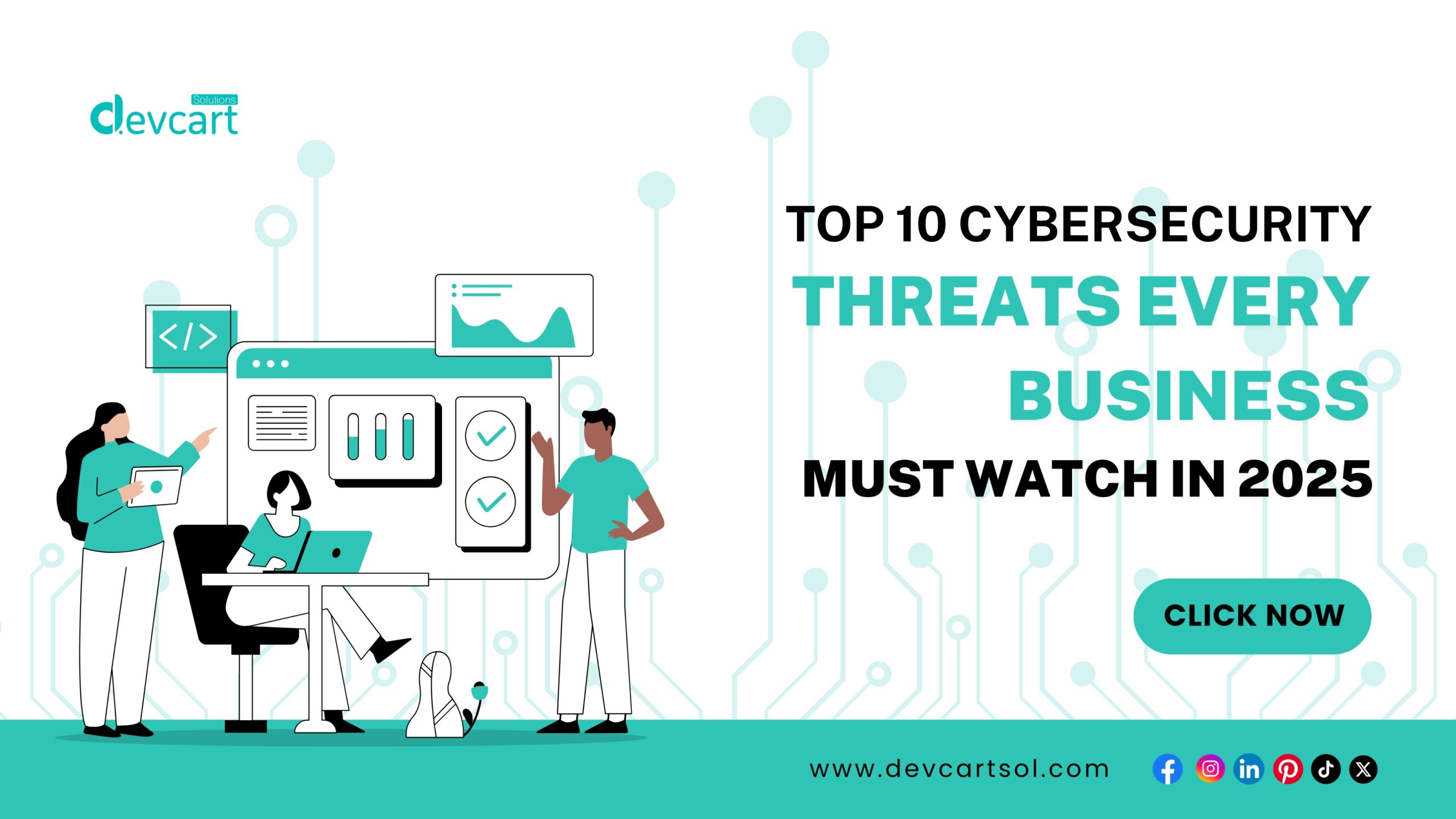As we step deeper into the digital age, businesses in 2025 face an increasingly complex cybersecurity landscape. With cybercriminals growing more sophisticated and attack surfaces expanding, staying vigilant is no longer optional — it’s a necessity. Here are the top 10 cybersecurity threats that every business must be aware of this year.
1. AI-Powered Cyberattacks
Artificial intelligence isn’t just a tool for innovation—it’s now a weapon in the hands of hackers. In 2025, cybercriminals are using AI to automate attacks, bypass security protocols, and create highly convincing phishing scams. Expect faster, more targeted breaches that evolve in real-time.
2. Supply Chain Attacks
As businesses rely more on third-party vendors, attackers are increasingly infiltrating through weak links in the supply chain. These indirect attacks are hard to detect and can compromise critical systems before you even realize it.
3. Ransomware-as-a-Service (RaaS)
Ransomware is now a business — literally. RaaS platforms allow even amateur hackers to launch devastating attacks with rented ransomware tools. The ease of access makes this threat more widespread and damaging in 2025.
4. Deepfake Social Engineering
Deepfake technology is being used to mimic CEOs, employees, and even clients to trick businesses into transferring funds or revealing sensitive information. These hyper-realistic impersonations are becoming increasingly difficult to spot.
5. Zero-Day Exploits
Zero-day vulnerabilities — flaws unknown to software vendors — are being exploited faster than ever. Businesses that don’t prioritize patch management leave the door wide open to attackers.
6. Cloud Security Misconfigurations
With the rapid adoption of cloud services, misconfigurations have become one of the biggest security gaps. Poorly set permissions, unsecured APIs, and weak identity management can expose sensitive data to unauthorized users.
7. IoT Device Vulnerabilities
As more devices connect to business networks (from smart printers to security cameras), each one becomes a potential entry point. Many IoT devices lack basic security controls, making them ideal targets for attackers.
8. Credential Stuffing and Password Attacks
Hackers are using stolen usernames and passwords from data breaches to access multiple accounts. In 2025, credential stuffing attacks are more automated and efficient than ever, especially against businesses with poor password hygiene.
9. Insider Threats
Whether malicious or accidental, insider threats remain a major risk. Employees with access to sensitive data can inadvertently or deliberately compromise security, especially in hybrid or remote work environments.
10. Quantum Computing Threats (Emerging)
While still emerging, quantum computing poses a future threat to encryption standards. Businesses need to start thinking about post-quantum cryptography as quantum breakthroughs accelerate.
Final Thoughts
The cybersecurity threats of 2025 demand more than traditional firewalls and antivirus software. Businesses must adopt a proactive, layered security strategy — including employee training, threat intelligence, zero-trust architecture, and continuous monitoring.
Staying informed and investing in strong cybersecurity measures isn’t just about protecting data — it’s about preserving your reputation, customer trust, and bottom line.















